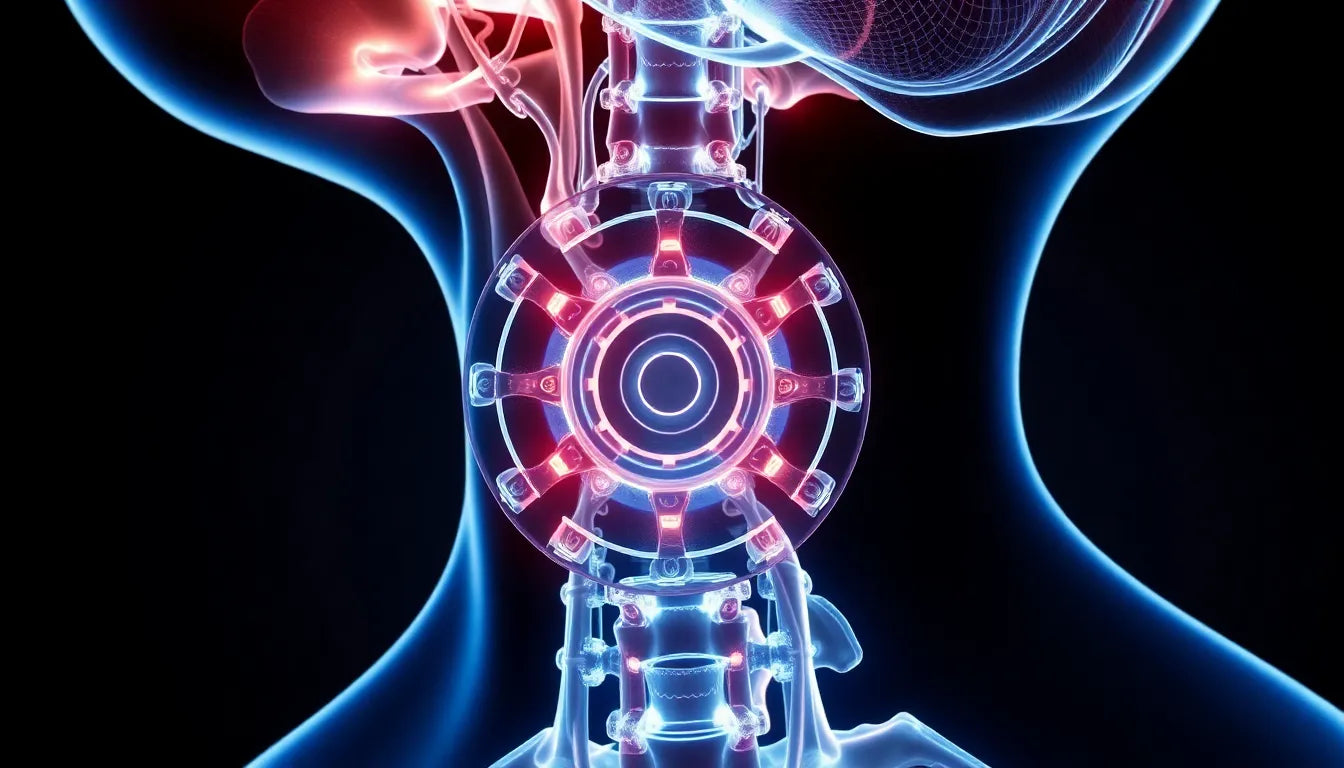Lower back pain is a common ailment, affecting millions worldwide, yet its true cause often goes undiagnosed. While many attribute this discomfort to simple strain or aging, there lurks a more insidious culprit: the herniated disc. Often referred to as a "silent" condition, a herniated disc can lead to significant discomfort and disability if not accurately identified and treated. Understanding the symptoms of a herniated disc in the lower back is crucial for effective management and relief.
Understanding herniated discs in the lumbar region
A herniated disc occurs when the soft, jelly-like center of a spinal disc pushes through a crack in its tougher exterior casing. This is particularly common in the lumbar region, which bears much of the body's weight and endures significant strain from daily activities. The lumbar spine is comprised of the lower five vertebrae, and any disc in this area can become herniated, potentially compressing nearby nerves and leading to a range of symptoms.
Unlike general back pain, which might stem from muscle strain or poor posture, a herniated disc presents specific symptoms. Recognizing these symptoms is vital, as they can significantly impact one's quality of life if left untreated. These symptoms can vary from person to person, but there are hallmark signs that should prompt further investigation.
The purpose of this post
The goal of this article is to educate readers about the specific symptoms associated with a herniated disc in the lower back. By distinguishing these symptoms from general back pain, individuals can make informed decisions about when to seek medical attention. Early detection and treatment are key to mitigating the discomfort and potential disability that can arise from this condition. In the following sections, we will delve deeper into the distinct symptoms of a herniated disc and provide guidance on when it is crucial to consult a healthcare professional. Stay informed and proactive in addressing your lower back concerns to ensure a healthier, pain-free future.
Detailed symptom descriptions of a herniated disc in the lower back
Recognizing the specific symptoms of a herniated disc in the lower back is crucial for distinguishing it from general back pain. These symptoms often arise from nerve compression and can vary in intensity and location, depending on the extent of the herniation and the specific nerves affected.
Lower back pain
The most common symptom of a herniated disc in the lumbar region is lower back pain. This pain can be intermittent or continuous and is often exacerbated by certain activities. Sitting for extended periods, standing for too long, or engaging in physical activities can intensify the discomfort. Unlike general back pain, which may be dull and persistent, the pain from a herniated disc is often sharp and localized, sometimes radiating to other areas.
Sciatica
Sciatica is a hallmark symptom of a herniated disc, characterized by sharp, shooting pain that originates in the buttocks and travels down the leg. This pain follows the path of the sciatic nerve, which can be compressed by the herniated disc. The pain can extend from the buttock down to the calf or foot, and it is often accompanied by a burning or tingling sensation. Sciatica can significantly impact mobility and quality of life, making it essential to seek medical evaluation if these symptoms occur.
Numbness or tingling
Another symptom indicative of a herniated disc is numbness or tingling, often described as "pins and needles." This sensation typically affects the legs or feet and is a direct result of nerve involvement. When the herniated disc presses on nerve roots, it can disrupt normal sensory signals, leading to these uncomfortable sensations. Persistent numbness or tingling should not be ignored, as it may indicate nerve damage.
Additional symptoms to watch for
Beyond the primary symptoms, there are additional signs that may indicate a herniated disc in the lower back:
- Muscle weakness: This can manifest as difficulty lifting the foot or leg, making walking or standing challenging. It occurs when the compressed nerves affect muscle strength and control.
- Reduced reflexes: A loss of reflexes, particularly at the knee or ankle, can be a sign of nerve compression. This symptom suggests that the nerve signals are not being transmitted effectively.
- Muscle spasms: The back muscles may become tight or spasm in response to nerve irritation. This can cause additional pain and discomfort, often exacerbating the initial symptoms.
Urgent symptoms requiring immediate attention
In rare cases, a herniated disc can lead to severe symptoms that require urgent medical care. Bladder or bowel dysfunction, such as incontinence or difficulty urinating, may indicate cauda equina syndrome, a serious condition caused by extreme nerve compression. This is a medical emergency, and immediate treatment is necessary to prevent permanent damage.
Understanding these symptoms and their implications is vital for anyone experiencing lower back pain. By recognizing the signs of a herniated disc, individuals can seek timely medical intervention, potentially preventing further complications and improving their quality of life.
Recognizing symptom patterns and variations
When it comes to a herniated disc in the lower back, symptoms often manifest unilaterally, meaning they affect only one side of the body. This is primarily due to the anatomical structure of the spine and the way herniated discs typically compress the nerve roots. Each nerve root supplies a specific area of the body, and when a disc herniates, it often presses on one side of the nerve root, leading to symptoms such as pain, numbness, or weakness on that side.
The pattern of symptoms can provide valuable clues for diagnosis. For instance, if the herniation is affecting the left side of the lumbar region, a person may experience pain or tingling down the left leg, aligning with the path of the affected nerve. Understanding these patterns can help individuals and healthcare providers pinpoint the cause of discomfort more accurately.
When to seek medical help
It's crucial to recognize when lower back symptoms necessitate professional medical evaluation. Persistent pain that does not improve with rest, or that worsens over time, should prompt a visit to a healthcare provider. Additionally, if symptoms such as sciatica, numbness, or muscle weakness develop, it's important to seek medical advice to prevent potential nerve damage.
Urgent medical attention is required if there are signs of bladder or bowel dysfunction, as these could indicate cauda equina syndrome, a serious condition that demands immediate intervention. Early diagnosis and treatment can significantly improve outcomes and prevent long-term complications.
Conclusion
Identifying the symptoms of a herniated disc in the lower back is essential for effective treatment and management. Key symptoms include lower back pain, sciatica, numbness, and muscle weakness, often appearing on one side of the body. Recognizing these signs early and seeking appropriate medical care can help mitigate discomfort and prevent further issues. By understanding these symptoms and their implications, individuals can take proactive steps toward maintaining their health and quality of life.
Frequently Asked Questions
What is the difference between general lower back pain and pain from a herniated disc?
General lower back pain is often diffuse and may result from muscle strain or poor posture, whereas pain from a herniated disc is usually sharp and localized, often accompanied by radiating leg pain (sciatica) and neurological symptoms like numbness or tingling.
Can a herniated disc heal on its own?
Yes, many herniated discs can heal over time with conservative treatments such as rest, physical therapy, and anti-inflammatory medications. However, if symptoms persist or worsen, medical intervention may be necessary.
How is a herniated disc diagnosed?
A herniated disc is typically diagnosed through a combination of physical examination and imaging tests such as MRI or CT scans, which provide detailed views of the spine and the extent of the herniation.
Are there any lifestyle changes that can help manage symptoms?
Yes, incorporating ergonomic adjustments, engaging in regular physical therapy, and performing specific exercises can help alleviate symptoms. Maintaining a healthy weight and practicing good posture are also beneficial.
What are the treatment options for a herniated disc?
Treatment options range from conservative methods, such as physical therapy and medications, to surgical interventions in severe cases. Surgery may be considered if there is significant nerve compression or if conservative treatments fail to relieve symptoms.
Sources
- Mayo Clinic. "Herniated Disk - Symptoms and Causes."
- Cleveland Clinic. "Herniated Disc: Symptoms, Causes, and Treatment."
- Penn Medicine. "Herniated Disc: Overview."
- Johns Hopkins Medicine. "Herniated Disk: What You Need to Know."
- Barrow Neurological Institute. "Herniated Disc: Symptoms and Treatment."
- NewYork-Presbyterian. "Herniated Disc: Causes and Symptoms."
- Spine-health. "Lumbar Herniated Disc Symptoms."



